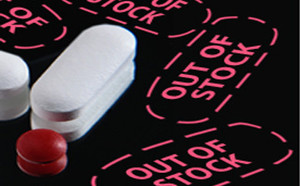Although the US Food and Drug Administration’s (FDA) generic drug approval process has a long-term successful track record, concerns remain for approval of narrow therapeutic index generic immunosuppressants, such as tacrolimus, in transplant recipients. Several professional transplant societies and publications have generated scepticism of the generics approval process. Three areas of concern are that the pharmacokinetic properties of generic and brand-name products in healthy volunteers may not reflect those in transplant recipients, bioequivalence between generic and brand-name products may not ensure bioequivalence between generics and high-risk patients may have specific bioequivalence concerns. While this study tests tacrolimus, the novel trial design and results may globally impact regulatory considerations and strategies, not only for the approval of immunosuppressants but also for other narrow therapeutic index/ critical dose drugs.
Drugs with a narrow therapeutic index are defined by a narrow distance between the dosage that induces a desired effect and that dosage which already has a toxic effect [1].
To address such concerns, an appropriately powered, prospective, fully replicated, partially blinded, randomized, 3-treatment, 6-period crossover bioequivalence study was conducted in kidney (n = 35) and liver transplant (n = 36) recipients comparing the most disparate tacrolimus generics on the US market with: 1) the originator’s tacrolimus; and 2) with each other. Patients were genotyped for CYP3A5, CYP3A4, POR and ABCB1 polymorphisms. Bioequivalence of major tacrolimus metabolites was also assessed [2].
Average bioequivalence (ABE) and scaled average bioequivalence (SCABE) acceptance criteria were met for all product comparisons for AUC (area under the curve), Cmax and Cmin in both kidney and liver transplant subjects. Intra-individual variability was similar for all products. SCABE was also observed for the major tacrolimus metabolite. In general, all subgroup analyses fell within ABE limits with most meeting SCABE criteria. Renal function or any other safety parameter were not affected by the 6 product switches over 42 days.
Using an innovative bioequivalence study design, these results demonstrate equivalence between brand-name and generic tacrolimus products and between generics in kidney and liver transplant recipients.
Conflict of interest
The study reported here [2] was funded by the United States National Institutes of Health and the US Food and Drug Administration: Office of Generic Drugs (U01 FD004573); ClinicalTrials.gov number, NCT (NCT01889758). The authors of the research paper [2] reported conflicts of interest, including having served on corporate advisory committees for pharmaceutical companies and having received research grants from pharmaceutical companies. For full details of the authors’ conflict of interest, see the research paper [2].
Abstracted by Professor Rita R Alloway, PharmD, FCCP,Director of Transplant Clinical Research,Department of Internal Medicine, College of Medicine, University of Cincinnati, Ohio, USA.
Editor’s comment
Readers interested to learn more about the bioequivalence of narrow therapeutic index drugs are invited to visit www.gabi-journal.net to view the following manuscripts published in GaBI Journal:
Bioequivalence of narrow therapeutic index drugs and immunosuppressives
Equivalence of generic medicines in general and immunosuppressants in particular – a regulatory opinion on switching of ciclosporin, tacrolimus and mycophenolate mofetil
GaBI Journal is indexed in Embase, Scopus, Thomson Reuters’ ESCI, and more.
Contribute a research or review paper to GaBI Journal – an independent, peer reviewed academic journal – send us your submission here.
Related articles
Follow-up study finds generic tacrolimus safe for kidney transplant patients
Switching stable kidney transplant patients to generic tacrolimus safe
References
1. Godman B, Baumgärtel C. Bioequivalence of narrow therapeutic index drugs and immunosuppressives. Generics and Biosimilars Initiative Journal (GaBI Journal). 2015;4(4):159-60. doi:10.5639/gabij.2015.0404.035
2. Alloway RR, Vinks AA, Fukuda T, Mizuno T, King EC, Zou Y, et al. Bioequivalence between innovator and generic tacrolimus in liver and kidney transplant recipients: a randomized, crossover clinical trial. PLoS Med. 2017;14(11):e1002428.
Permission granted to reproduce for personal and non-commercial use only. All other reproduction, copy or reprinting of all or part of any ‘Content’ found on this website is strictly prohibited without the prior consent of the publisher. Contact the publisher to obtain permission before redistributing.
Copyright – Unless otherwise stated all contents of this website are © 2018 Pro Pharma Communications International. All Rights Reserved.








 0
0











Post your comment